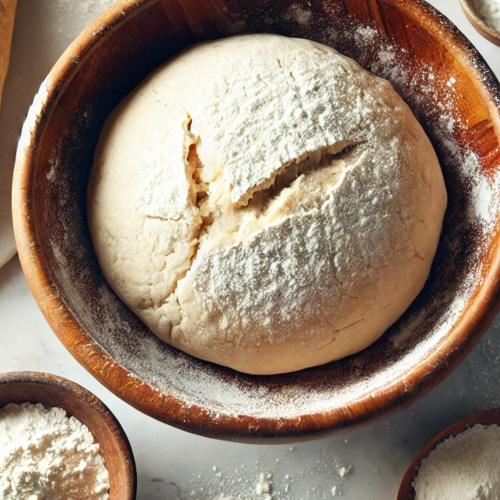Step-by-Step Instructions
Activate the Yeast
In a small bowl, dissolve the yeast in the warm water. Let it sit for about 5-10 minutes until frothy.
Mix the Dough
In a large bowl, combine the flour and yeast mixture. Mix with a wooden spoon or your hands until a rough dough forms. Add a bit more water if needed, but avoid making it too sticky.
Knead the Dough
Transfer the dough to a lightly floured surface. Knead for about 10-12 minutes until smooth and elastic. Add small amounts of flour as necessary.
First Rise
Shape the dough into a ball and place it in a lightly greased bowl. Cover with a damp kitchen towel or plastic wrap. Allow it to rise in a warm place for 2 hours or until doubled in size.
Shape the Dough
After the first rise, gently punch the dough to release air. Shape it into a round or oval loaf and place it in a proofing basket or on parchment paper.
Second Rise
Cover the loaf and let it rise again for about 1 hour until slightly puffed.
Bake
Preheat the oven to 425°F (220°C). Place a baking stone or sheet in the oven to preheat.
Score the top of the dough with a sharp knife for a traditional look.
Bake for 25-30 minutes until the crust is golden brown and the bread sounds hollow when tapped on the bottom.
Tips & Variations
Flavor Additions: Although traditionally salt-free, you can add ½ teaspoon of salt to the dough for modern palates.
For a Softer Crust: Brush olive oil over the dough before baking.
Dietary Substitutions: Use whole wheat flour for added fiber, though you may need extra water to adjust the consistency.
